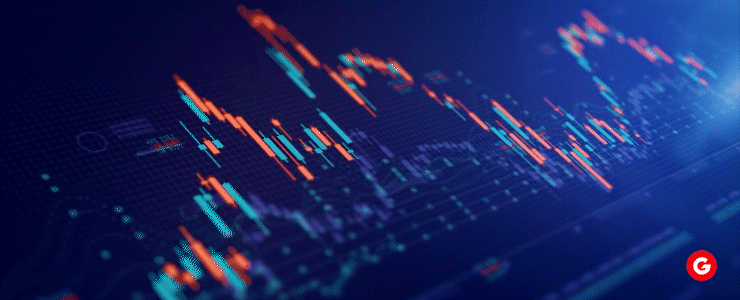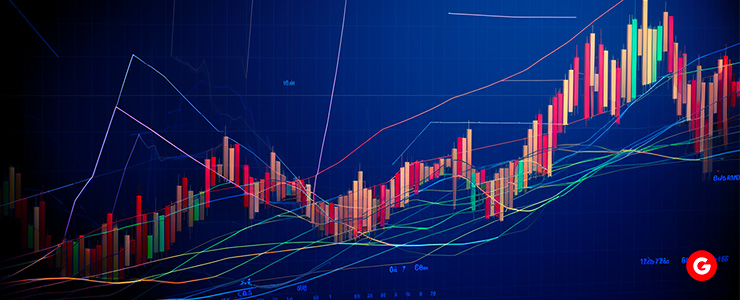Charting techniques for CFD and Forex trading are very dynamic and competitive. Traders continuously seek an advantage in these markets, where every minute and every pip may significantly affect profitability.
Many charting techniques include Japanese Candlestick Patterns, Moving Averages, Bollinger Bands, Relative Strength Index (RSI), Trading with the Golden Ratio, the Ichimoku Cloud, and the Elliott Wave Theory. In this comprehensive article, we will look in detail at various sophisticated charting techniques for CFD and yang berbeda used by experienced traders.
To excel, traders frequently employ sophisticated charting techniques, which provide deeper insights into market movements and more smart entry and exit positions. Following this article will assist you in excelling at such charting strategies.

Charting Techniques for CFD and Forex Trading
1. Japanese Candlestick Patterns: Uncover Market Psychology
Complex analysis tools make it easier to understand the markets. Japanese candlestick patterns are one of them and also one of the most powerful. Within each pattern, there is a visual representation of price movement over time.
This includes information about open, closed, high, and low prices. Those looking deep into candlestick patterns can see how traders respond to price changes and use that advantage. Here are some of those key patterns:
– Doji: It’s a sign of indecisiveness in the market, suggesting potential reversal when it shows up after a strong trend.
– Hammer: A positive reversal signal, appearing at the end of a downtrend.
– Shooting Star: This is often seen as an indicator for bearish reversals when formed at the end of an uptrend.
– Engulfing Patterns: When one candle covers another, it could indicate that investor sentiment is changing.
However, to take full advantage of these patterns, you must recognize them and know what happens inside the traders’ minds.
2. Moving Averages: Riding the Trend
They are pretty smooth. Moving averages take price data over a certain period and make it easier to read. This helps identify trends in the market and spots where you should enter or exit. There are two main types:
– Simple moving average (SMA): Looks at all data points equally across the period, giving you a more balanced view of historical prices.
– Exponential moving average (EMA): Focusing more on recent data makes it more responsive to price changes.
Experienced traders use long-term and short-term moving averages together to confirm trends.
3. Bollinger Bands: The art of measuring extremes and volatility
The Bollinger Bands have three lines. The first is the middle band, which is typically a 20-period SMA. These are valuable tools for gauging volatility and determining if conditions are overbought or oversold.
You know you are in for a strong price move when they start to squeeze together with low volatility beforehand. If prices ever touch the upper band, it may mean that you are facing an overbought market. And touching the lower one is an indication of an oversold condition.
4. Relative Strength Index (RSI): The art of measuring momentum
RSI is another popular momentum oscillator traders use to measure how fast and how much prices have been moving. Moving between 0 and 100, this indicator becomes particularly useful when identifying overbought and oversold conditions.
For example, you can get a hint that things are going too far north if your reading surpasses 70. It’s the same thing for oversold, but it would be below 30 this time.
Traders also use RSI divergence as a signal. Instead of looking out for a certain number, they look at where it fails to surpass a previous high while making new ones in price moves to sniff out any possible weakness in trends coming up soon.
5. Trading with the Golden Ratio: Fibonacci Retracement
Fibonacci retracement levels are a great tool in the world of trading. Potential support and resistance levels can be identified through this. Some key levels are 38.2%, 50%, and 61.8%. They are handy for entry and exit points, especially when a retracement aligns with other technical indicators.
6. A Comprehensive Trend Analysis Tool: The Ichimoku Cloud
If you are into trading, you may want to add the Ichimoku cloud to your arsenal of tools. It’s so useful that it can provide insights into trend direction, market momentum, and even support and resistance!
This indicator comprises several lines, like the fast line Tenkan-sen and the slow line Kijun-sen, along with the cloud, Senkou Span. Each gives valuable information to help you make decisions faster and more effectively than ever.
If the price is above the cloud, then a bullish trend is indicated, but if it’s below, it suggests a bearish trend. You can also use the cloud for support or resistance, improving this tool! Additional signals are provided by crossovers from Tenkan-sen to Kijun-sen as well.
7. Riding the wave patterns: Elliott Wave Theory
If you have never heard of the Elliott Wave theory, don’t worry. This approach to market analysis was created by Ralph Nelson Elliott, and it’s based on waves that alternate between impulse and corrective phases.
If we go into it any more than this, then we may as well become scientists. When someone gets a hold of this concept, they can use it to anticipate the market direction and find spots where there may be reversals. The method puts waves into eight phases, providing a comprehensive market analysis framework.
Forex Trading with FXGiants: Your Key to the Financial Markets
Trading currency is a fast-paced and thrilling space where traders can bet on the price shifts of different currency pairs. A global free market lets traders engage in this activity 24/7 or during the financial week. Regardless if you’re just starting or have experience, having the right platform can be essential to how much success you will find here.

Why Choose FXGiants?
FXGiants stands out as one of the best options when looking for a platform. Here’s why:
1. Regulation and Security: FXGiants is a regulated broker who works within secure and transparent trading environments. They have oversight that ensures protection over your funds and compliance with industry standards.
2. Various assets: When people think about forex, they only consider currency pairs. However, FXGiants offers diversified assets, including commodities, indices, and cryptocurrencies. This not only helps you diversify your portfolio but also minimizes risks.
3. Advanced Trading Tools: FXGiants comes with the best tools and resources that enhance your trading experience and give you an edge against everyone else. From the market analysis that’s updated in real-time to expert advisors, every instrument you need has been meticulously placed on this platform.
4. Leverage and Low Spreads: A significant benefit of FXGiants is its leverage and low spreads. With competitive leverage, you’ll maximize your potential profits while keeping trading costs low.
5. Customer Support: One thing you don’t have to worry about is getting thrown into the ocean without knowing how to swim. Whether you’re a beginner or someone with experience who has specific questions, someone on their team will always be ready to assist you.
FAQs
1. What do CFDs and Forex trading mean?
Contracts for Difference (CFDs) and Forex (foreign exchange) Trading are methods to speculate different assets’ price movements, including currencies, goods, and rates from various places. It allows people to profit without actually owning the asset. Its main two differences are that CFDs target any asset price change while Forex focuses on the value of currency pairs.
2. How should I use Japanese Candlestick patterns effectively when trading?
Effectively using Japanese candlestick patterns starts with studying them and their meanings closely. Then, recognize how they reflect shifts in market sentiment. Finally, combine them into your strategy with other technical indicators for confirmation.
3. Why is risk management important in CFD and Forex trading?
Risk management is crucial when it goes down to both of these methods because of their high volatility. It’s the difference between losing everything or being able to continue making trades after a loss. To manage this risk, remember to set stop-loss orders and define how much you will lose on each trade you make so it doesn’t get out of hand.
Conclusion
In conclusion, these are various charting techniques for CFD and Forex trading. There are many techniques out there that have been used to analyze CFDs and foreign exchange trading charts. And getting good at all of them is crucial if you want success in the field. Remember, though, that no single technique can guarantee your success, and always have risk management strategies put in place to protect your capital. Traders who want to improve in these types of markets must continue learning and practicing as much as possible.
DISCLAIMER: This information is not considered investment advice or an investment recommendation, but is instead a marketing communication
